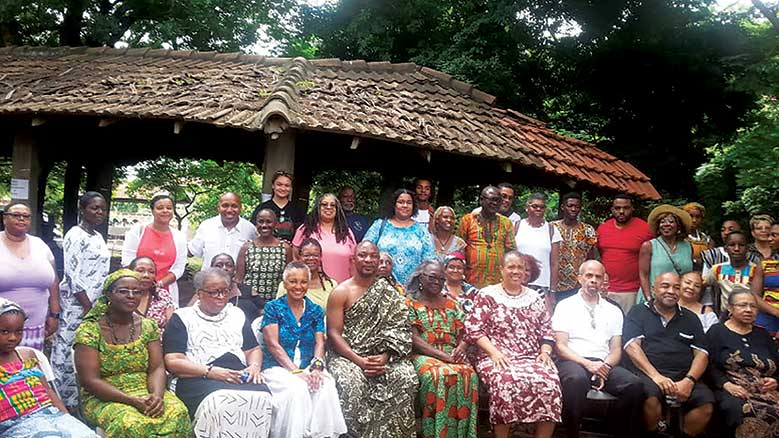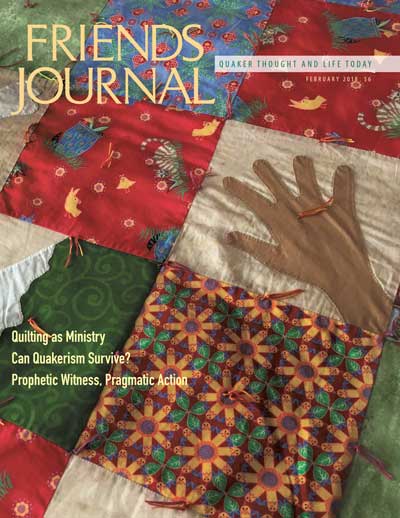
The story of the Fellowship of Friends of African Descent began more than 26 years ago, with a group of African American Quakers and their families and friends whose hearts were stirred in support of the spiritual and social needs of Quakers of African descent worldwide. The mission adopted in 1990 continues to serve the needs of the Fellowship today:
- To publish and respond to the concerns of Friends of African descent within the Religious Society of Friends.
- To provide for the nurture of Friends of African descent, their families and friends.
- To address and respond to issues affecting people of African descent in their communities worldwide.
At the 2016 gathering of the Fellowship of Friends of African Descent at Philadelphia’s Arch Street Meeting House, the Fellowship reaffirmed the latter part of its mission to address and respond to issues affecting people of African descent worldwide. In doing so, Friends accepted an invitation given by the Hill House Meeting in Accra, Ghana, to come and visit with them there. We understood that cross-cultural experiences are central to the Quaker faith and practice of seeing the presence of God in all people.
Founded by British Quaker settlers who were recruited as staff for Achimota College and School in 1925, the Friends established a meeting for themselves and for other members of the staff. In 1934, they built the Hill House Meeting garden shelter on the school property.
Today Quakerism in Ghana is fully indigenized, with Ghanaian Quakers serving on every level of leadership in the meeting. Hill House is a vibrant Quaker meeting with a big heart, a heart that has reached out over the years to engage with the larger Ghanaian society by joining the Christian Council of Ghana and supporting Accra schools nutrition and health project under the supervision of Adam Curle, professor of education at the University of Ghana.
While worshiping in deep silence with Ghanaian Quakers on the First Day morning of our journey, the second stanza of one my favorite hymns stuck in my head: “This Is My Song, O God of All the Nations,’’ written by Lloyd Stone and based on a tune composed by Jean Sibelius.
My country’s skies are bluer than the ocean,
And sunlight beams on clover-leaf and pine.
But other lands have sunlight too and clover,
And skies are everywhere as blue as mine.
Oh, hear my song, O God of all the nations,
A song of peace for their land and for mine.
The bluer skies of Ghana took us to places of great beauty and places of great sadness. One such sad place was a visit to the slave fort of Elmina Castle. Erected by the Portuguese in 1482 as São Jorge da Mina (and a United Nations-listed historical site), it has the distinction of being the oldest standing European building in sub-Saharan Africa.
The fort was a place where unspeakable acts of evil were perpetrated against people of African descent. It was believed that only the strongest would survive the transatlantic voyage. Our guide at Elmina Castle told us that the slave dungeons were cramped and filthy, each cell often housing as many as 200 people at a time. The floor of the dungeon was compacted filth and human excrement. African girls as young as 12 years old were systematically raped, abused, and tortured daily.
In Elmina Castle, there is a small gate leading to the ocean. Through this gate, thousands of enslaved persons would leave Elmina and be placed into ships that would transport them to slave traders across the Atlantic to the Americas. Hanging upon the wall as one enters the castle is a plaque dedicated to the many lives lost in the transatlantic slave trade. It reads:
In everlasting memory of the anguish of our ancestors. May those who died rest in peace. May those who return find their roots. May humanity never again perpetuate such injustice against humanity. We the living vow to uphold this.
We continued our journey to the Kakum National Park, a rainforest which many Ghanaians have called the “high places” of the Earth. We marveled at the beauty of creation as we walked the forest canopy walkway 200 feet above the rainforest floor.
We spent three days in the Ashanti Region. While visiting the Centre for National Culture, we observed indigenous craftsmen at work carving, kente weaving, and adinkra cloth printing. We concluded our regional visit in Kumasi, the second largest city in Ghana and the former capital of the great Ashanti Empire. The city is rich in the traditions of the Ashanti people and is the location of the Manhyia Palace, the residence of Asantehene, the king of the Ashanti people, and the royal family.
We learned of the famous Golden Stool that “holds the soul of the Asante kingdom.” According to oral tradition, in the seventeenth century King Osei Tutu I, with the help of his feared fetish priest Okomfo Anokye, conjured the Golden Stool from the sky and landed it on the lap of Osei Tutu, the first king of the Ashantis. The fetish priest declared that the soul of the nation resided in the stool, and the people must preserve and respect it.
According to the World Economic Forum, ten of the world’s countries with the youngest populations are in Africa. The combined effects of a high birth rate and low life expectancy mean that in some parts of West Africa, the median age is under 15 years. A 2014 United Nations report observes, “Lack of meaningful work among young people is playing into frustration that has in some instances contributed to social unrest or unmanaged migration.”
One of the highlights of the trip for this writer was a visit with Linda Nyaamah Anaabah. I had the great pleasure of interviewing her about her work with the Afrika Youth Movement, a pan-African, action-oriented, youth-led movement which was formed in 2013 to advocate for the participation, development, and leadership of African youth in transforming Africa and achieving their right to peace, equality, and social justice.
The opportunity to travel to Ghana made a lasting impression on the lives of many in the Fellowship, one being a deeper understanding of what it means to be people of African descent living in the diaspora. The visit to historical sites like Elmina Castle was a testimony to the power of honoring the past, but it was not the last chapter. The ancestral spirits live and speak in us today through the presence of God in our hearts. The lyrics of “We Are,” composed by Ysaye M. Barnwell and sung by Sweet Honey in the Rock, remind us:
We are our grandmothers’ prayers
and we are our grandfathers’ dreamings
we are the breath of our ancestors
we are the spirit of God.





Beautiful. The words we are our grandmother’s prayers and our grandfathers dreaming’s we are the breath of our ancestors spirit of God. Speaks to my condition, for as I know, I’m mostly Celtic Irish Scottish with a little bit of Afro-American and indigenous Nanticoke to spice up the mix. From your friend, Katie Kent, who’s people came to America, Delaware 1720s
I would like to worship with Hill House on my visit there in late July. Please email me a contact.
Thank you,
Richard Moore